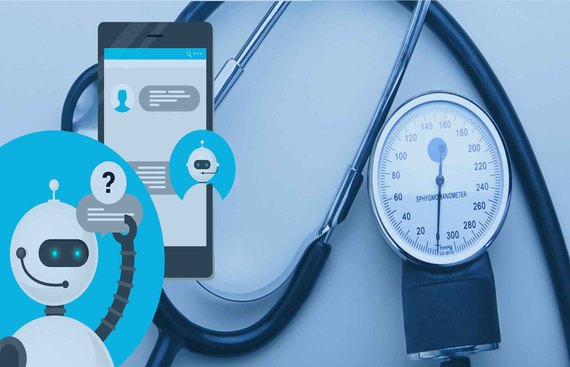How Chatbots are Aiding Healthcare Sector Amid Pandemic
Sangeetha P, Online Content Writer, siliconindia | Thursday, 24 September 2020, 06:08 Hrs

Artificial intelligence has been revolutionizing various industries for a long time now, and healthcare is one such sector that solely relies on technology and introduces new innovations on every other day. Gartner's report predicts that about 75 percent of healthcare organizations would have embraced AI's potential by 2021 to upgrade their performance. Though, this technology ventured into the healthcare sector to automate the mundane task to cut down the heaping paperwork by making a shift to the digital world. But, gradually AI has expanded all over the sector and has aided in enhancing its productivity be it administration or streamlining patient information.
Chatbot's Role During COVID-19
The AI tool played a vital role in fighting the COVID-19 pandemic, as these are helping the healthcare organization and researchers, to spot the critical zone and arrange needed resources to provide the medical facility. Many healthcare centers have installed AI-powered chatbots to counter the patient anxiety, as a measure to enhance patient experience and bring out better results.
The novel coronavirus has infected the modern and technologically sophisticated world. Yet, we are unable to counter as accuracy, and gaining updated information of the virus spread is inefficient. Thus, chatbots have been an ideal choice for transferring information during the pandemic. These Robots could be used as an intermediate between a doctor and a patient, as this process would aid in seamless diagnosis and further treatments without any unnecessary physical contact to keep the virus spread under check.
In an event, organized by the Abu Dhabi-based TRENDS Research & Advisory, Bartlomiej Stanczyk, Robotics Engineer with ACCREA Engineering in Germany, said, “We aim to build a completely autonomous diagnostician through robotics, thus enabling the transfer of the skill from the human doctor on the machine carrying out the treatment.” He added, "The interface between the doctor and patient means the robot can carry out all of the diagnostic and treatment processes."
Apart from serving as an interface between the doctors and the patients, these robots are also used to disinfect critically inaccessible areas in the hospitals.
Further, it is also predicted that AI could aid in developing vaccination to COVID-19. In the event, Munier Nazzal, Professor of Surgery at the University of Toledo in the US said, “AI can help with vaccine development by examining the virus' components. This can aid specialists to gain a basic understanding and develop treatments that can be subject to pre-clinical trials.”
Public's View On Chatbot at Healthcare
According to JAMIA's publication, patients are comfortable using chatbots for initial COVID-19 screening, but, the patient getting convinced with the automated process equal to the human diagnosis is certainly a tough task.
However, many healthcare organizations have installed chatbots to perform initial COVID-19 screening for patients who sense coronavirus symptoms. This was set up to cut down the raising visit to hospitals and infection spread due to it. Also, the chatbots could provide 24/7 service at the convenience of the patients.
Future of AI in Healthcare
According to reports, the healthcare industry is expected to gain more than $6.6 billion investment by 2021. Thus, making it one of the fastest-growing sectors but, growth opportunities without commendable investment is certainly a tough task.
The Global Healthcare Chatbots Market is predicted to rise from its from $122 million registered in 2018 to $542.3 million by 2026 at a CAGR of 20.5 percent in the predicted period of 2019-2016 says Data Bridge Market Research (DBMR) in its latest market research report.
Chatbot has proved to be a boon to the healthcare sector in this critical pandemic scenario. They have significantly eased the task of medical officers across the globe. Moreover, they not just simplify the work process but are also cost-effective yet prove to be efficient by minimizing the doctors' workload and improving patients' experience.
